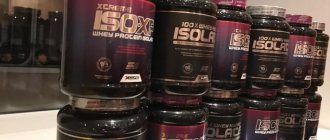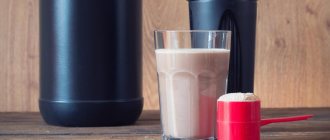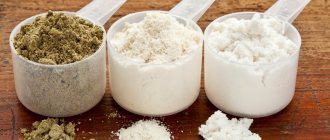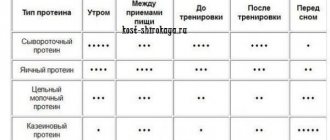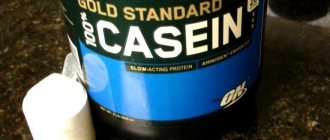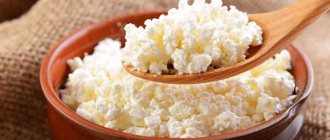What is whey isolate?
It is a mixture of proteins. They are obtained from whey. Whey protein is considered the best option for making sports nutrition. In fact, it is a simple protein that does not contain non-amino acid compounds and has undergone the highest possible purification. Therefore, it is quickly absorbed and provides the necessary amount of nutrients to the body, without loading it with ballast.
The advantages lie in simple factors:
- Good digestibility.
- Content of essential amino acids.
- High absorption rate.
- Few non-protein structures.
- Low production costs.
Whey protein is more cost-effective than protein from other sources due to the ease of extraction and purification.
What is it and what is it made from?
Isolate (whey isolate, isolated protein) refers to sports nutrition. This food supplement is obtained from milk protein by filtering it. In fact, it is almost pure protein. To obtain isolate, whey is dehydrated. Then lactose, fat, and cholesterol are removed from it. Today, two filtration methods are used.
The first method is to expose the protein to high temperatures. The justification of this method is questionable. It is unknown how high temperatures affect the properties of polypeptides. The second method is microfiltration. It involves more delicate purification to obtain polypeptides in their pure form.
There are only three types of whey protein:
- Isolate - this form contains up to 97% protein. Achieved through cleaning technology. Polypeptides are quickly absorbed. The supplement contains virtually no fat, lactose or cholesterol.
- Whey protein concentrate is much cheaper than isolate. Contains 60-85% protein. The rest is fats, lactose and peptides. Absorbs within 3-4 hours. This is the difference between isolate and whey protein concentrate.
- Hydrolyzate is the most expensive sports product due to its almost 100% protein content. Absorbed very quickly. This happens because production technology allows it to be broken down into amino acids.
If you decide to use protein shakes, be careful. Under the guise of an isolated polypeptide, you can buy whey protein concentrate. Concentrate is always cheaper, but this is due to its disadvantages. Firstly, it will contain fats and carbohydrates. Secondly, due to this there is a higher calorie content. Thirdly, the protein content is lower than in isolate. The concentrate takes much longer to digest. The only attractive thing here is the price.
Manufacturing method
When producing dairy products such as cheese, whey is produced. It contains carbohydrates, minerals, fats, and proteins. This by-product is not suitable for consumption as food or as a supplement, but subsequent processing helps reduce by-products while maintaining the correct amount of protein.
First, the whey is dried, lipids and other non-protein compounds are removed. The process is carried out by spraying a dry mixture through a membrane. After cleaning, protein powder is obtained, which is processed and prepared for vacuum packaging, because the entry of foreign particles and bacteria into the product is unacceptable.
The production of whey isolate differs in the degree of purification, which requires equipment capable of separating even the smallest particles from the protein. Of course, the cost of the product increases, but the quality is much higher.
Individual dosage
For athletes involved in strength training, the recommended norm is 2-2.5 g of protein per 1 kg of weight. Let us remind you that the basis of the diet should be natural products. It is from them that you need to get protein. And only if there is a shortage of them should you purchase protein powder.
Let us show the calculation of isolate dosage using a simple example. So, there is an athlete weighing 70 kg. His daily diet includes 100 g of cottage cheese, 200 g of chicken fillet and 5 eggs. Our task is to calculate the protein deficiency and the recommended amount of whey isolate for each day.
- If an athlete weighs 70 kg, the protein consumption rate will be 140-175 g per day;
- Using tables presented on the Internet, we calculate the amount of protein from food: 100 g of cottage cheese = 17 g, 200 g of fillet = 50 g, 5 eggs = 25 g. Total amount of protein: 17 + 50 + 25 = 92 g. Therefore, the deficiency is approximately 50-70 g of protein;
- Typically, one serving of whey isolate contains 25-30 g of protein. This means that the daily protein intake in this case will be equal to two servings.
Operating principle
For the formation of tissues, the body requires high-molecular organic substances - proteins containing amino acids with various peptide bonds. Protein is involved in the formation of muscle tissue, ligaments, and joints. Required for the formation of hormones and the development of immunity. Many processes occurring in the body depend on proteins.
Once in the body, protein is broken down into its components - amino acids. These compounds are subsequently used to synthesize other protein chains based on the information provided in the genes.
The body is capable of synthesizing amino acids on its own, but essential ones are obtained only from the outside through nutrition. Therefore, without protein food, the body will not be able to function normally, because the body will also not be able to produce the required amount of amino acids.
Therefore, it is necessary to take a certain amount of proteins. If there are not enough of them in your normal diet, then compensate for the lack with sports nutrition.
Benefit
The supplement will have a positive effect on health if taken without fanaticism, exactly as much as required for the body. Benefits of Whey Protein Isolate:
- It is a source of essential amino acids, therefore, there will be no shortage of substances necessary for life.
- Positively affects the cardiovascular system.
- Accelerates the body's recovery after physical activity.
- Reduces the level of cortisol and other hormones that destroy muscle tissue.
- Useful for weight loss and dieting, because it allows you to balance the ratio of carbohydrates, proteins, and fats in the diet.
When used correctly, the supplement will not cause any harm to humans. The only exception may be intolerance to a particular component.
Side effects
The protein included in the supplements is of natural origin, so searching for negative factors is akin to searching for them in milk. Many studies have been conducted on the side effects of protein. None were found to have harmful properties.
There are contraindications, they will have to be considered in more detail:
- Excess protein can lead to digestive disorders, therefore, you should not lean too much on protein. The body is not able to absorb large amounts of protein at once.
- Presence of intestinal diseases. Protein is a nutrient not only for humans, but also for aggressive microflora, therefore, excess protein can lead to the rapid proliferation of bacteria.
- Kidney problems. Most often, such people are prescribed a vegetarian diet, since animal protein in any form is contraindicated for them.
If there are no contraindications for the listed points, then take it without fear.
Again, whey isolate does not cause the problems inherent in concentrate and even hydrolyzate, since there is practically no fat and lactose in the composition. Practice shows that the isolate is absorbed very well and is excellent for those with lactose intolerance.
Combination with other additives
Let's look at the combinations of whey isolate with other types of sports nutrition:
- With BCAA complex . BCAA amino acids are contained in small quantities in the isolate. But still, if you take the supplements at the same time, the effect will be stronger - the muscle fibers will receive “slow” protein for growth and “fast” amino acids for recovery;
- With creatine . Such a ligament provides not only nutrition for the muscles, but also an additional source of energy. Supplements can be taken as a single dose or individually. The ratio is 1/1, that is, for one serving of protein there is one serving of creatine;
- With fat burners . It is not recommended to take supplements at the same time as it may cause digestive problems. It is better to drink protein and fat burners separately;
- With complex amino acids . This link does not make sense, since the isolate consists of amino acids. By combining these supplements, the athlete increases the amount of protein per serving, but there is no guarantee that it will be completely absorbed. Most likely, the body simply utilizes some of the nutrients.
Types of Whey Protein
Additives vary in degree of purification and composition. There are 3 types on the market: Concentrate. It is characterized by weak purification and high lactose content. Also contains some fat and cholesterol. Protein content ranging from 25 to 80%. The higher the quality of the product, the fewer third-party impurities.
- Hydrolyzate is a protein destroyed with the help of enzymes. The body is able to absorb amino acids faster, because there is no need to waste time on fermentation and breakdown. The complexity of production is high, which is why this type of protein is the most expensive. Protein composition is from 80 to 90%.
- Isolate. Very similar to concentrate, but the degree of purification is much higher. Lactose is practically absent, no more than 1%, while in concentrate its percentage can be above 20%. Perfect for people with lactose intolerance or during weight loss, when carbohydrates need to be reduced as much as possible.
How to choose
There are no clear rules for choosing an isolate. Before purchasing, be sure to look at reviews from people on the Internet and videos of famous athletes. This way you can compare several products from different brands. For those who do not want to analyze information from the Internet, we offer a selection of popular whey isolates:
- BioTech Iso Whey Zero (RUR 3,900);
- Dymatize Nutrition ISO-100 (RUR 5,000);
- BSN Syntha-6 Isolate (RUR 3,700);
- RPS Nutrition Whey Isolate 100% (RUR 3,800);
- Ultimate Nutrition ISO Sensation (RUR 3,600);
- SciTec Nutrition 100% Whey Isolate (RUR 3,400);
- Allmax Isoflex (5400 RUR);
- Optimum Nutrition 100% Gold Standard (RUR 3,300);
- AN Platinum Isolate Supreme (RUB 7,300);
- Nanox Varcil R2 (RUR 8,700).
The only thing I can recommend is to read the ingredients on the back of the package. Try to choose an isolate with the highest amount of protein per serving and the least amount of fat. And if you are on a strict diet, we recommend using proteins without flavoring additives.
Which option to choose
All types are good, but sometimes one of them can perform better. For example, it is easier to increase muscle mass with concentrate. Hydrolyzate allows you to quickly compensate for amino acid deficiency. Isolate is suitable for weight loss. So the choice depends on the goal.
Hydrolyzate is very expensive, the concentrate contains a lot of carbohydrates. In terms of price-quality ratio, preference should be given to isolate. A high degree of purification will allow you to receive only substances that are beneficial to the body, without gaining excess weight due to excess disaccharides. In order to balance fats, proteins, carbohydrates, there is no better choice than isolate. Almost pure protein, maximum 1% of impurities in the composition, accordingly, maintaining balance will become much easier.
How and when to take the supplement
The intake of sports nutrition should correspond to the chosen goal. The specifics of use depend on this:
- In case of gaining muscle mass. Any of the three types of protein will do. But it is better to give preference to isolate; carbohydrates can be obtained from other sources.
- In case of weight loss, isolate is recommended, as it contains less fat, lactose, and even the hydrolyzate contains more impurities. The main thing is not to consume in large quantities, even with the help of protein you can create an excess of calories, but when losing weight there should be a deficit.
- In the absence of sufficient protein food. Then the concentrate will be enough, but if there are a lot of carbohydrates in the diet, then to avoid fat gain it is advisable to pay attention to the isolate. It copes well with nutritional deficiencies.
Admission rules
Whey isolate is a universal protein that is used with equal effectiveness both for gaining muscle mass and for relief training.
For gaining muscle mass
The main property that needs to be used correctly is the high rate of absorption of the isolate.
The right time to take it is after training (within an hour) or in the morning, immediately after waking up.
These are the so-called anabolic protein windows. During these time periods, the body most needs easily digestible protein. Therefore, muscle biosynthesis occurs at an accelerated pace.
Important detail:
For accelerated absorption, the powder is diluted with water!
If you use milk (which many people do unknowingly), the rate of protein digestion slows down.
If you are simply taking whey protein as an additional source of protein (for example, during the day or at night), then safely dilute it with milk (if you have normal lactose tolerance).
Although for gaining muscle mass it is more appropriate to take protein concentrate. It is an order of magnitude cheaper, and gives the same result in gaining weight.
For drying (relief)
Whey isolate is the ideal type of protein for relief training. During this period, whey hydrolyzate is also taken. But it is more expensive, so it is not so popular during drying.
The high concentration of protein, a large amount of BCAA amino acids in the composition, plus the almost complete absence of fats and carbohydrates makes it indispensable when working on relief.
Here the recommendations for the time of admission are the same. The only thing is that the protein is diluted exclusively with water to reduce the calorie content of the protein shake.
Manufacturers recommend taking 1-2 (maximum 3) servings per day. This applies to both mass and relief training.
Time and dosage
First of all, you need to decide on the quantity. Per kilogram of weight, a serving is 2.5 - 4 grams. For severe loads, it is recommended to increase the dosage to 8. More is possible, but without additional intake of digestive enzymes or drugs that accelerate absorption in the intestine, the body will not be able to absorb a significant amount of protein.
Whey isolate is best taken between meals and before bed. This will have a positive effect on the absorption and recovery of the body. After waking up, it makes little sense to consume protein in supplement form; the body primarily requires carbohydrates. After training, it is better not to use the supplement; the body needs to quickly restore energy costs, and protein is extremely poorly suited for this purpose.
Proteins: what are the differences and how to choose the right one?
There is no mention of brands, advertising of individual brands of sports nutrition, etc. in this article. It is written based on many years of work with sports supplements, only the most important facts and simple structured information about protein powders for achieving sports (and not only) goals.
In good sports nutrition stores (including Fitline.by), the range usually includes:
- whey protein isolate
- whey protein concentrate
- casein
- multi-component protein (usually a combination of the above options + whole milk protein (this is 80% casein + 20% whey), egg or soy protein can be added
- beef, egg, soy, pea - and other rare varieties
You can look for additional information about the chemical composition, the exact rate of absorption and differences in amino acid profiles; this article aims to consider the types of protein in sports nutrition from a practical perspective.
How is protein produced?
First of all, you need to understand the basis: most proteins are based on cow's milk protein in its pure form (in short, the milk is dried, the sugar and fats are separated, and the result is milk protein powder). In its natural form, it consists of approximately 80% casein (“slow” milk protein, which takes up to 10 hours to digest; an example of products high in casein is ordinary cheese and cottage cheese) and 20% whey protein (“fast” milk protein ). In general, it should be noted that there are extremely many methods for producing protein. For example, the same whey protein can be obtained either directly from whole milk, or whey can be obtained during the process of making cheese and then further processed and purified. But this is not so important for the end consumer; it is important to understand that it is based on regular milk and no chemicals.
To visualize this more clearly, we have prepared a small diagram:
So, the types of proteins in sports nutrition stores:
Casein
Casein is rarely appreciated by amateurs; it is mainly preferred by professionals and taken together with whey protein. Why? The fact is that casein is transformed into a jelly mass during digestion and is absorbed slowly, up to 8 hours (this is exactly how cheese and cottage cheese behave). Many manufacturers process casein using gentle methods without the use of acids or heat, resulting in micellar casein. Micelles are small clusters of casein molecules that are formed during the digestion process, due to which the effect of casein increases. The amino acids from casein saturate the blood slowly and gradually, so casein is not the best choice for a post-workout shake; it’s easier to eat meat. However, this type has no equal when it comes to getting a serving of protein before bed. Unlike other types of protein, casein supplies the body with amino acids during night sleep and prevents the muscles from being used as a source of these amino acids.
Does everyone need it? No. If you are a beginner or you do not have significant muscle mass to maintain, you can get by with cottage cheese. But if the cottage cheese is already sitting in the liver, casein is just right.
And most importantly: casein is like no other protein suitable for healthy and wholesome baking. All kinds of low-carb muffins, proper casseroles, protein cookies, etc. with a wonderful airy texture - all thanks to casein. So this is another argument in his favor.
Whey proteins: concentrate or isolate?
The difference between whey concentrate and isolate is solely in the processing method. In the first case, filtration is more gentle, natural compounds of amino acid residues (di- and tripeptides) are preserved, and the body perceives the concentrate as a more natural type of food. Among the disadvantages: with such filtration, a couple of grams of carbohydrates and fats remain per 100 g of product. Essentially, ordinary whey is taken, it is dried, impurities are removed from it, the residues are filtered using various technologies, ceramic filters are used (we won’t go into chemistry), but at the end we get good, quickly digestible protein. For 100 g of a well-made whey concentrate, say, with the taste and aroma of strawberry, we get about 80% protein, about 6-7% fat and about 5-6% carbohydrates, the rest is sweeteners, flavors, possibly thickeners. Overall, whey protein concentrate has an excellent amino acid profile and a decent taste. The consistency of the finished cocktail based on it is liquid, much thinner than casein, and there is no bitter aftertaste.
Why do some athletes prefer whey isolate over concentrate?
There are two options: either someone said so and the person blindly follows the instructions without going into details, or he is a competing athlete on a dry run and understands that a serving of concentrate will contain as much as 2 g of carbohydrates and 2 g of fat more than in isolate , and when every calorie counts, this is important. And because it will be absorbed a full 10 minutes longer compared to isolate. For most people this doesn't matter. For 80% of sports nutrition store visitors, a good whey concentrate as a quick post-workout protein is a great option. Among the features: it is unlikely to be suitable as a meal replacement. If you make it with water, it is not too filling and after half an hour you will want to eat. And protein baking doesn’t work with it either. So this is just a post-workout shake to support the muscles.
Whey isolate
In order to please the most demanding audience, for whom every gram of micronutrients is important, and to obtain an almost perfect protein product, whey concentrate is subjected to further molecular filtration, some carbohydrates and fats are removed from it, di- and tripeptides are broken down into individual molecules so that it is absorbed into the blood if not at the speed of light, it's just very fast. This is how the legendary whey isolate is obtained (without going into details). Its obvious advantages: per 100 g of whey isolate (without sweeteners and flavors, which has a rather specific taste) there is up to 94% protein in the finished product, 0.8 g of fat and about 1 g of carbohydrates. After training, the muscles absorb it like desert rain. Cons: in addition to the price (which is 20-30 percent higher than the concentrate), the isolate has a slight bitterness, which is very difficult to mask even with bright flavors. It turns out liquid, like water, and literally after 15 minutes your stomach is empty again. However, the body has already received its 25 g of protein with the serving, as in a good steak. This is an advantage for those who have huge demands on the amount of protein per day. However, this can also be a disadvantage.
In general, if you compare the sensations, the muscles are happy with both the concentrate and the isolate. And, as they say, if there is no difference, then why pay more?
Understand correctly, no one is dissuading you from buying isolate. This is the purest whey protein, an excellent functional product, but I would only recommend it to athletes for cutting or as a SUPPLEMENT, and definitely not as a COCKTAIL. Do you understand? You can safely take it, but you don’t always need it; often the concentrate will be quite enough if you need quick protein. Let's be honest, I don't know many pros who will unmistakably say from the first sip that this was an isolate, but this is a concentrate. Few people distinguish between these 10 minutes in the rate of absorption, and 2-3 g of carbohydrates per serving will not make a difference for most trainees; most do not adhere to the strict limits of 40 g per day.
Other types of whey protein
Sometimes the isolate is further processed and a hydrolyzate or hydroisolate is obtained. It is sometimes present in protein mixtures, it makes up 10% in the “isolate + concentrate + hydrolyzate” mixture, has an even greater absorption rate due to splitting, but the obvious disadvantage is a bitter aftertaste. In general, amino acid complexes are mainly made from it.
Multicomponent proteins
This type of protein powder is rapidly gaining popularity, and it has already firmly taken its place on the shelves. The formula for multicomponents is usually like this:
- approximately half consists of slow protein (usually manufacturers use casein or whole milk protein, where 80% is still casein)
- and 30-50% from fast types of protein (usually represented by whey concentrate and isolate). Other types of protein such as soy may be added.
The amino acid composition of this protein is generally good. Pros: rich, pleasant taste, thick, dense consistency and a feeling of fullness after consumption. Suitable as a meal replacement, able to satisfy a slight hunger. You can drink it both after a workout (some of the proteins will be absorbed quickly and feed the muscles, some will be absorbed for a long time to maintain this fuel), and for breakfast or at night. You can get a sweet milkshake with almost no carbs. In fact, it can replace a package of casein and a package of whey protein separately. Suitable for making protein desserts and baking. Cons: professionals rarely buy a multi-component, because... This is a product aimed more at the mass market. Professionals will prefer to buy casein and whey protein separately. Yes, perhaps it will not trigger such frantic anabolism as a portion of isolate after training. Well, the protein matrix will generally be absorbed more slowly, although again, for the vast majority this is an excellent choice, taking into account all the advantages! Another serious disadvantage: there is no multicomponent for multicomponent. Sometimes manufacturers openly reduce the cost of the product and add vegetable proteins as the main part. So it is important to read the ingredients.
Conclusions:
If you need the highest functionality from a protein , i.e. you need to stimulate anabolism, or control catabolism during the “cutting” period, you have a period of heavy training and need protein to take after training as a supplement, and not as food to a greater extent - you need to take whey protein (concentrate or isolate, the differences are described above) or you can prefer an amino acid complex (complex amino acids or BCAA).
If the goal is simply to increase the total amount of protein in the diet , give muscle support, prepare for the beach season, get a delicious sweet cocktail with a minimum of carbohydrates at any time of the day, have protein for baking, organize yourself a quick breakfast 30-40 minutes before training - We would recommend a multi-component protein , but read the composition and choose one that is really low in carbohydrates (no more than 7-15 g per 100 g of powder), because this may be a reduction in price of the product. If, with such an amount of carbohydrates, the price is more than acceptable, such a product will also be suitable.
Which protein is better
Of course, the titans of sports nutrition production surpass everyone else in product quality, so it’s not for nothing that they are on the pedestal of popularity:
- OptimumNutrition. Leads the sports nutrition market and creates high-quality products. The company has raw materials, equipment and advanced technology.
- BSN is a popular manufacturer with good additives. Many people will recommend BSN for its very good products.
- Dymatize has a wide range of products and experience in the manufacture of sports nutrition. At the same time, the price of the products is lower than that of previous companies.
- Syntrax also demonstrates excellent quality indicators and reasonable product prices.
- SAN is a popular manufacturer of sports nutrition with a good assortment and has many fans.
It is difficult to say which product is better, but the range of any of the companies presented is not bad, so it is better to focus on cost and taste. The difference in the composition of similar products is insignificant.
Reviews
You hear a lot of negative things about protein. They stem from a misunderstanding of the principles of sports nutrition. Some believe that it grows muscles, burns fat, and does not require straining or going to the gym. Well, others generally think that they are being injected with drugs!
Protein is a supplement, so don't expect miracles. With proper training and nutrition, there will be good results, but thoughtless use will not bring the desired benefit. Experienced athletes always use protein and respond positively. Especially supporters of fitness and bodybuilding, because protein is necessary for gaining muscle mass or maintaining relief.
Most experienced athletes prefer isolate, as the supplement allows them to maintain better shape.
Well, that's all! Read my next articles, subscribe to blog updates and telegram channel. And of course, share with your friends on social networks, they also want to be beautiful.
What is protein isolate
Protein isolate is a protein considered to be of high quality and has maximum biological activity. It supports processes in the body aimed at the synthesis of amino acids, the actual amount of which determines the quality of human muscle mass.
Numerous studies in the field of sports nutrition confirm that the composition of the isolate is optimal both for professional athletes (bodybuilders, bodybuilders, powerlifters) and for people involved in sports “for themselves.”
Protein isolate properties:
- it has a positive effect on the immune system, supplying the body with a sufficient amount of glutamine;
- it has antioxidant properties (naturally removes waste and toxins from the body);
- increases the rate of muscle mass growth (subject to regular strength training according to correctly designed training programs in the gym).
A distinctive feature of the isolate is that it consists of 95% pure protein. This sports nutrition product is completely devoid of fats and carbohydrates, which allows it to be included in the diet of people trying to lose weight. Despite its “pure” composition, the isolate is capable of provoking acute allergic reactions in a person prone to them.
In such cases, the body usually reacts either to the milk component of the composition, or indicates the presence of impurities (flavors, dyes, flavor enhancers, sweeteners).
Due to the minimal amount of secondary substances in a high-quality isolate, the food additive is absorbed almost instantly, which is also an important advantage of the product in question in comparison with its analogues.

